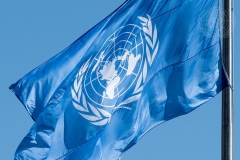On Google Maps, Tracking the Invasion of Ukraine
Nonproliferation and Terrorism Studies professor Dr. Jeffrey Lewis and a team of students noticed the Russian invasion of Ukraine on Google Maps hours before it was officially announced, the Washington Post reports.





